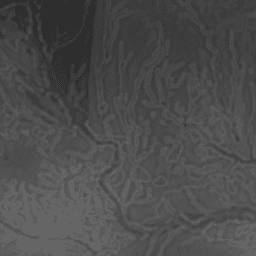Page Summary
-
The Physiographic Diversity dataset provides an index of the diversity of physiographic types calculated using the Shannon diversity index at multiple scales.
-
This dataset is based on the USGS's 10m NED DEM and is provided by Conservation Science Partners.
-
The data is released under the CC-BY-NC-SA-4.0 license and is intended for climate adaptation planning by providing stable landscape features.
-
The dataset contains one band,
b1, representing Physiographic diversity with a pixel size of 270 meters. -
The dataset is available for use in Google Earth Engine for research, education, and nonprofit purposes.

- Dataset Availability
- 2006-01-24T00:00:00Z–2011-05-13T00:00:00Z
- Dataset Provider
- Conservation Science Partners
- Tags
Description
The Physiographic Diversity dataset provides an index of the diversity of physiographic types. It was calculated using the Shannon diversity index at multiple scales (km): 115.8, 89.9, 35.5, 13.1, 5.6, 2.8, and 1.2. It is based on the USGS's 10m NED DEM (available in EE as USGS/NED).
The Conservation Science Partners (CSP) Ecologically Relevant Geomorphology (ERGo) Datasets, Landforms and Physiography contain detailed, multi-scale data on landforms and physiographic (aka land facet) patterns. Although there are many potential uses of these data, the original purpose for these data was to develop an ecologically relevant classification and map of landforms and physiographic classes that are suitable for climate adaptation planning. Because there is large uncertainty associated with future climate conditions and even more uncertainty around ecological responses, providing information about what is unlikely to change offers a strong foundation for managers to build robust climate adaptation plans. The quantification of these features of the landscape is sensitive to the resolution, so we provide the highest resolution possible given the extent and characteristics of a given index.
Bands
Pixel Size
270 meters
Bands
| Name | Min | Max | Pixel Size | Description |
|---|---|---|---|---|
b1 |
0 | 1 | meters | Physiographic diversity |
Terms of Use
Terms of Use
Citations
Theobald, D. M., Harrison-Atlas, D., Monahan, W. B., & Albano, C. M. (2015). Ecologically-relevant maps of landforms and physiographic diversity for climate adaptation planning. PloS one, 10(12), e0143619
Explore with Earth Engine
Code Editor (JavaScript)
var dataset = ee.Image('CSP/ERGo/1_0/US/physioDiversity'); var physiographicDiversity = dataset.select('b1'); var physiographicDiversityVis = { min: 0.0, max: 1.0, }; Map.setCenter(-94.625, 39.825, 7); Map.addLayer( physiographicDiversity, physiographicDiversityVis, 'Physiographic Diversity');